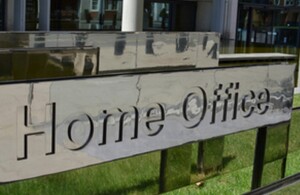Increased risk of Irish-related terrorism
The Security Service has raised the threat level from moderate to substantial. This means an Irish-related terrorist attack is a strong possibility.

The system of threat levels aims to keep you informed about the risk of terrorism at any given time. It also helps police and other law enforcement agencies decide how to allocate staff.
This is the first time an Irish-related threat assessment has been published. The threat from international terrorism remains severe.
Strong possibility of attack
Home Secretary Theresa May said: ‘The director-general of the Security Service has informed me that he has raised the threat to Great Britain from Irish-related terrorism from moderate to substantial, meaning that an attack is a strong possibility. Judgments are based on a broad range of factors, including the intent and capabilities of terrorist groups.
‘This is the first time we have published the Irish-related threat assessment to Great Britain. This is in the interests of transparency and to encourage people to remain vigilant.
‘The first and most important duty of government is the protection and security of the British people. We have been consistent in stating that the threat to the UK from terrorism is real and serious. The balance we aim to strike is keeping people alert but not alarmed. I would urge the public to report any suspicious activity to the police and security services in their continuing efforts to discover, track and disrupt terrorist activity.’
The threat levels
There are five levels of threat:
- critical - an attack is expected imminently
- severe - an attack is highly likely
- substantial - an attack is a strong possibility
- moderate - an attack is possible but not likely
- low - an attack is unlikely
Who decides the threat levels?
The Security Service (MI5) is responsible for setting the threat level from Irish-related terrorism, both in Northern Ireland and in Great Britain.
Meanwhile, the Joint Terrorism Analysis Centre is responsible for setting the threat level from international terrorism.
To do this, they consider information gathered through intelligence in the UK and abroad. They also consider how terrorist organisations have behaved in the past.
What should you do?
You should always remain alert to the danger of terrorism; look out for suspicious bags on public transport or any other potential signs of terrorist activity.
But you should not let the fear of terrorism stop you from going about your day-to-day life as normal. Your risk of being caught up in a terrorist attack is very low.
Threat levels abroad
For information on threats abroad, visit the Foreign & Commonwealth Office website where you’ll find country-specific advice.